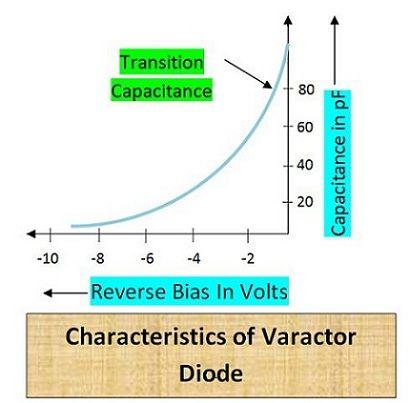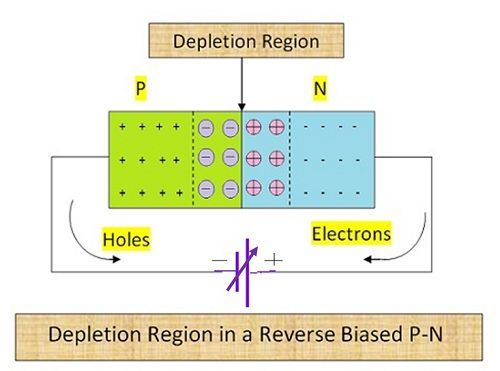The term varactor comes from a variable capacitor. Varactor diodes only work in reverse bias. A varactor diode acts like a reverse-biased variable capacitor. Varactor diodes are also called varicap diodes, tuning diodes, variable reactance diodes, or variable capacitance diodes.
In other words, it is a specially designed semiconductor diode whose pn semiconductor junction capacitance changes when the voltage applied across its terminals changes. It is also called a varactor diode for short because it is a diode that can behave like a variable capacitor.

Features of Varactor Diode
- These diodes produce significantly less noise compared to other diodes
- These diodes cost less or are more reliably available
- These diodes are very small and very light compared to other diodes.
- Useless when operated in the forward direction
- In reverse bias mode, this diode increases the capacitance.
Symbol of Varactor Diode
The symbol for a varactor diode is shown below. The schematic of a varactor diode is almost identical to that of a normal pn junction diode.

The two parallel lines on the cathode side represent the two conductive plates and the space between these two parallel lines represents the dielectric.
Construction of Varactor Diode
Varactor diodes are composed of p-type and n-type semiconductors. In n-type semiconductors, free electrons are the majority carriers and holes are the minority carriers. Therefore, free electrons carry most of the current in n-type semiconductors. In p-type semiconductors, holes are the majority carriers and free electrons are the minority carriers. So holes carry most of the current in p-type semiconductors.
When a p-type semiconductor and an n-type semiconductor are in contact, a PN junction is formed between them. This pn junction separates the p-type and n-type semiconductors. A depletion region is created at the p-n junction. A depletion region is a region where there are no mobile charge carriers (free electrons and holes).
The depletion region consists of cations and anions (charged atoms). These cations and anions do not move from one place to another. The depletion region blocks free electrons from the n-side and holes from the p-side. The depletion region thus blocks current across the PN junction.

VI Characteristics of Varactor Diode
From the characteristic curve, it can be seen that the junction capacitance decreases exponentially as the reverse voltage increases from 0 V.
Relationship between junction capacitance VR and Vk.
CT = K/(Vk + VR)n
where CT is the junction capacitance, Vk is the knee voltage, VR is the reverse voltage, and n is 1/2 for alloy junctions and 1/3 for diffusion junctions. Voltage is therefore inversely proportional to the capacitance.

The tuning range of the capacitor depends on the doping level of the diode. For abrupt doping transitions, the doping is uniform, but for super abrupt changes the doping profile is non-uniform.
Working of Varactor Diode
When the PN junction is reverse-biased, the depletion layer widens. And with increasing reverse voltage, the depletion layer gradually increases further. The depletion region, therefore, produces a junction capacitance CT.
CT = ɛA/W
where CT is the junction capacitance, ɛ is the dielectric constant, A is the area of the capacitor plates, and W is the width of the depletion layer.

From the above relationship, we can see that the junction capacitance is inversely proportional to the width of the depletion layer. So if you want a high magnitude of capacitance size, you’ll need a smaller width. Also, applying a low reverse voltage narrows the width.
Similarly, if a smaller capacitance is required, the width must be increased, and a larger width requires a higher reverse voltage to be applied. This width can therefore be controlled with the applied blocking voltage.
Applications
- Automatic Frequency Controllers (AFCs)
- Ultra High-Frequency Television sets
- High-frequency Radios
- Frequency Multipliers
- Band Pass Filters
- Harmonic Generators

